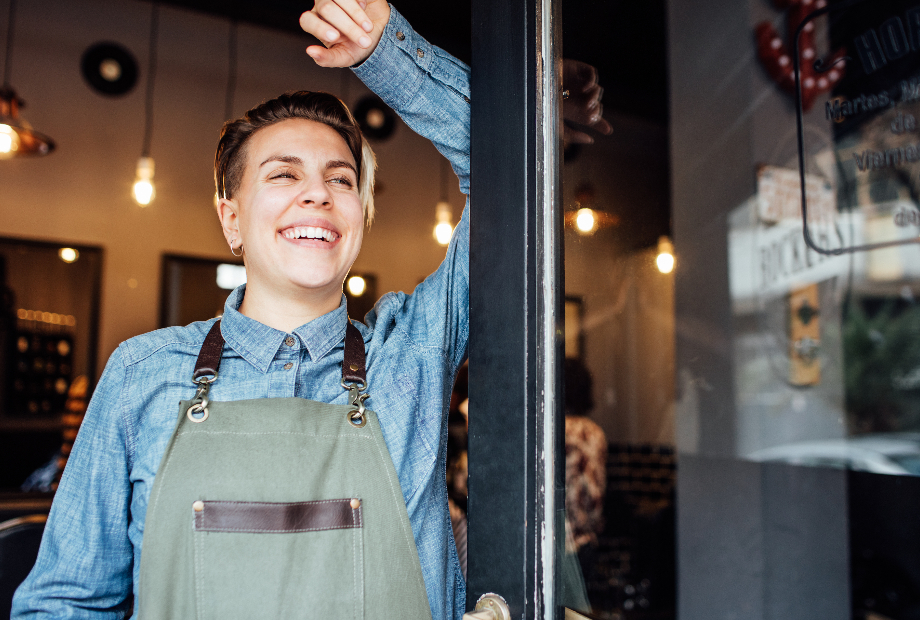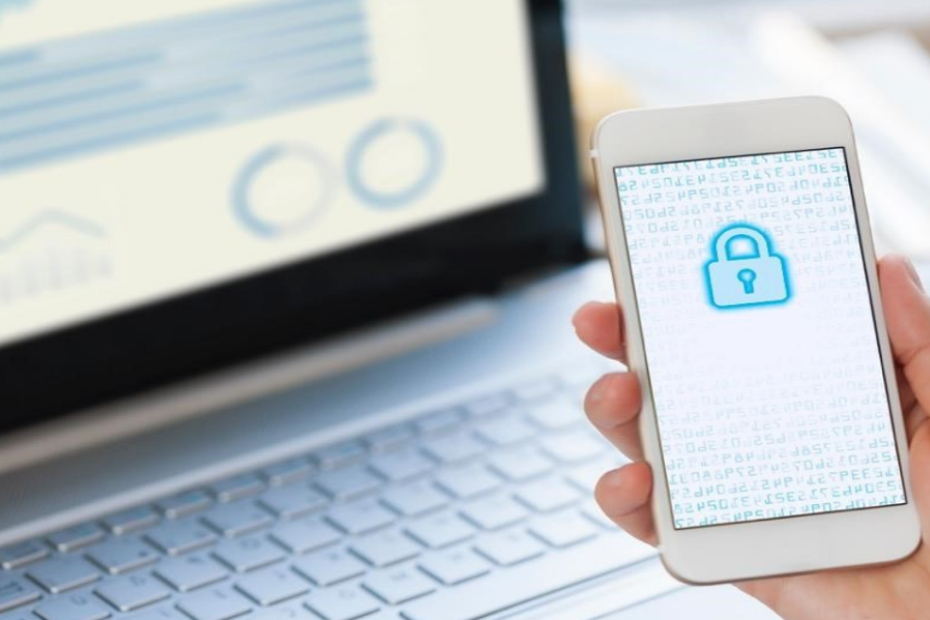You may be welcoming previous customers back through your doors, but your re-opening counts just as much as the first day you flipped your sign to ‘open’. That’s because shoppers need new things from you – namely an assurance that they will be safe when they visit your store.
In a recent discussion, Laura Davy, National Director, CFS Client Strategy – Retail and Health Care, shares some tips for retailers as a safety-first approach to shopping becomes the new reality. “Right now, people are concerned about going to retail stores,” says Davy. “They are anxious, especially depending on their age and risk factor. If they don’t feel safe the first time they visit the store, their likelihood of going back a second time is going to be significantly decreased.”
A careful, thoughtful approach is therefore critical to both making a strong first impression, and implementing sustainable practices that meet the needs of your customers, employees and your business. This step-by-step approach can help guide you through the phases of your business’ re-opening.
Step 1: Plan and install new safety protocols before you re-open
Create a Safe in-store Experience
Before you open your doors, consider all customer touch points and what measures you can put in place to promote physical distancing and safety standards.
- Consider shopping footprint patterns. If aisles do not easily allow for physical distancing, use arrows to promote one-way traffic and designate certain doors for entry and exit to help direct flow.
- Produce signage to help customers understand what to expect inside and consider making it fun to catch people’s attention. For instance, Mastermind Toys asks shoppers to maintain a 2m distance from each other, or the equivalent of three scooter lengths; golf courses encourage staying 2 club lengths apart; and in the Yukon, some retailers ask that you keep one Caribou apart.
- Install tangible assets to protect employees and customers. Plexiglas barriers and sneeze guards will help give shoppers confidence that you’re taking the safety of your employees and customers very seriously.
- Implement policies and processes such as offering hand sanitizer when customers enter the store, limit the number of shoppers in the store, and ensure frequent sanitization of high-touch surfaces and products to keep stores as germ-free as possible.
- Offer contactless checkout and payment options to minimize close quarters at the point-of-sale and reduce the possibility of spreading or catching germs.
- Book appointments. For facilities where physical distancing measures are more difficult to implement safely or where sanitation is required (e.g. gyms), booking appointments ahead of time may help to make members more comfortable and confident returning to the physical location or store.
Offer Shopping Alternatives
Not all Canadians are of the same mindset when it comes to COVID-19 and the level of precaution that is needed to keep them safe. Some will refuse to wear a mask, while others remain very concerned about stepping into a retail space.
While it may be difficult to cater to everyone’s shopping needs and expectations, having a range of services and experiences can help. Consider the mother with a newborn at home, or the customer who is caring for his elderly father. These individuals will likely be more hesitant about returning to a pre-COVID lifestyle, and for them, providing safe and contactless experiences outside of a store will be important.
Therefore, retailers may want to consider alternatives to the in-store experience such as:
- Contactless delivery
- Touch-free packaging and shipping text notifications to avoid face-to-face contact
- “Click and collect” curbside pickup
- Drive-through options
Furthermore, as you consider introducing these options, it’s important to also consider any new support tools or services you might also have to implement such as contactless payments, parking lot signage and additional employee support to continue to build confidence with consumer and employees and make them feel safe shopping with you.
Step 2: As you re-open, communicate with your customers with transparency and reassurance
Be Explicit With Your Efforts
Having a safe and clean space is only the beginning when it comes to giving shoppers the assurance they need to feel comfortable in your store. You’ll want to show them what you’re doing to protect them.
Whether it’s sanitizing shopping carts at the front of the store, wiping down service counters or other surfaces before and after customer interaction, or cleaning payment terminals and touch screens, being deliberate, thorough and visible in your efforts will be important going forward.
“One piece of advice is to communicate more than ever. [When it comes to cleaning], part of it is doing it, and part of it is communicating to customers. Health and safety is really important – but if you’re not telling your customers and employees what you’re doing, they won’t necessarily know and have an appreciation for everything you’ve put in place to ensure their health and safety.”
Be Clear About Your Expectations
A safe shopping experience is really everyone’s responsibility. Therefore, it’s also important that you are communicating the role your customers play in-store to ensure a safe experience for everyone.
Here are some steps to consider:
- Publish store policies on your website. The requirement (or suggestion) to wear a mask or sanitize your hands upon entry, the number of customers allowed inside at one time, and the availability of services such as curbside pick-up, or by-appointment consultation can prepare customers for their shopping experience. What’s more, this type of pre-communication can help eliminate surprises and/or disappointment upon arrival.
- Post outdoor signage at your location(s). The same information as listed above can be emphasized on-site to educate and remind shoppers of the protocols you’re following and expect them to observe.
- Display signage throughout your store as reminders about store policies and procedures and consider audio reinforcement for an extra measure. “I know I am guilty of going to a store and not noticing the decal arrows on the floor,” admits Davy. “You don’t necessarily see them unless you’re looking at your feet. So it’s important that your reminders are placed in people’s field of vision for them to be effective.”
Explain the ‘Why’
While the government and media have gone to great lengths to educate Canadians as to the reasons why measures such as physical distancing, barriers and sanitizing stations are important in communal locations, there’s always an opportunity to reinforce the message. Plus, explaining the reasons behind your measures demonstrate that you’re not just following the rules, but that you truly value the health and safety of your employees and customers. “People are getting bombarded with so much information, so it’s important that retailers are telling their story and cutting through the clutter. Showing customers that you care about them and your employees can go a long way in these uncertain times,” reminds Davy.
Step 3: Look beyond COVID and embrace the new normal
Consider Preferences that May Endure
Once you’ve taken care of immediate needs and protocols, it’s time to look ahead. Many experts agree that day-to-day living will not return to a pre-COVID state.
“It is expected that changes in consumer preferences will outlast COVID,” says Davy. “In China, there has been a 55 per cent increase in consumers intending to permanently shift to online grocery shopping, and an increase in three to six percentage points in overall-commerce penetration in the aftermath of COVID-19.”
Therefore, you’ll want to consider what your business’ ‘new normal’ might look like, and think about ways you can pivot your offerings, experiences and fulfillment in order to succeed over the long-term.
“For permanent solutions, retailers will likely need to turn to technology to ensure a safe shopping experience,” advises Davy.
Stay Up-to-date with Tech Trends
Fortunately, exciting innovations are emerging. “Some retailers are using video conferencing platforms to offer customer service and/or live streaming to promote their products, allowing customers to see now and buy now,” explains Davy. “And for retailers that have historically struggled to sell online due to customers’ inability to try items on (i.e. cosmetic and apparel companies), these retailers may want to consider leveraging augmented reality so that customers can try things on from the comfort of their own homes.”
On a more simple level, many retailers are using mobile to connect with shoppers before they arrive – whether it’s sale reminders or personalized product suggestions – to help customers find what they need faster.
On the sanitization side of things, self-cleaning tools and automatic cleaning robots are also being used, and in some grocery stores bacteria-killing UV rays are integrated into scanning technology.
While you’re not going to implement all the new and exciting technology that is being developed, watching the trends and understanding what might stick around for the future (COVID or not) can help your business offer safe and seamless experiences both your customers and employees will appreciate.
Opening your doors again is extremely exciting for you, your employees and your customers. Transforming your store operations to provide safe experiences for everyone will be critical for a successful transition in the months and years to come.
This article is intended as general information only and is not to be relied upon as constituting legal, financial or other professional advice. A professional advisor should be consulted regarding your specific situation. Information presented is believed to be factual and up-to-date but we do not guarantee its accuracy and it should not be regarded as a complete analysis of the subjects discussed. All expressions of opinion reflect the judgment of the authors as of the date of publication and are subject to change. No endorsement of any third parties or their advice, opinions, information, products or services is expressly given or implied by Royal Bank of Canada or any of its affiliates.



















